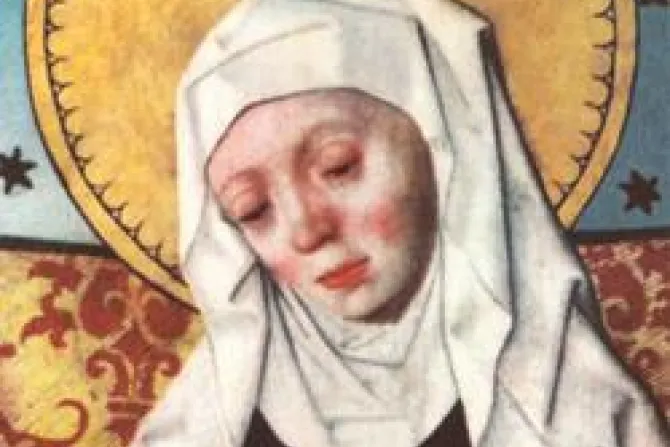Denver, Colo., Jul 17, 2011 / 06:01 am
On July 23, the Catholic Church celebrates the long and fruitful life of St. Bridget of Sweden, who raised a large family before going on to found a religious order. In modern times, she has been named a patron saint of Europe.
Bridget was born in 1303, the daughter of a prince and legislator named Birger and his royally-descended wife Ingeburgis. Her parents were notable for their strong faith, and especially for their devotion to recalling Christ's suffering and death. Sadly, Ingeburgis died soon after Bridget's birth, and her aunt stepped in to assist in raising her.
The future saint had a serious temperament even as a child, and came to share her father's and her late mother's devotion to Christ's passion. At the age of 10, she had a vision of the Lord's agonizing death, in which he drew her attention to the wounds inflicted by “those who despise me, and are insensible to my love for them.”
At age 16, Bridget married the Swedish prince Ulf of Nericia. The couple joined the Third Order of St. Francis, and made their home an admirable example of the “domestic Church.” Out of their eight children, two died in infancy, and another two in the Crusades. Two of the surviving children married, and one of the two who entered religious life was canonized as St. Catherine of Sweden.
While bringing up their children, Bridget and Ulf also helped to care for the needs of the poor. They devoted their own resources to building a hospital, where they worked to care for patients themselves. After Ulf's resignation from the king's council, the couple undertook a long and arduous pilgrimage to Santiago de Compostela in Spain.
The trip took a heavy toll on Ulf's health, and he nearly died during the return trip. Against the odds, however, he recovered. By the time of his death, Bridget's husband had become a part of the Cisterian monastic order with his wife's consent. Even after his death in 1344, the Cistercians continued to regard him as an example of holiness.
Bridget then renounced her position as a princess. She divided her husband's property among her surviving children, and resolved to devote the rest of her life to penance. She began wearing a hair shirt, and ate only bread and water on Fridays. During 1344 she also founded a monastic community, which would eventually develop into the Bridgettine Order.
During her years as a widow, Bridget experienced many visions of Christ which were compiled into two books of “Revelations.” Although the Church never gave a definitive judgment on their content, Blessed John Paul II wrote in 1999 that Church had “accepted the overall authenticity of her interior experience,” which he described as a “profound union with Christ.”
In 1349, Bridget made a pilgrimage to Rome to seek the Pope's approval for her community's rule of life. She ended up moving to the Eternal City, and never returned to Sweden during the remaining decades of her life. She did, however, leave her new home on pilgrimages to Assisi and the Holy Land.
St. Bridget of Sweden died in 1373. Two of her children brought her remains back to the headquarter of her religious order in Sweden the following year, and she was canonized by Pope Boniface IX in 1391. In 1999, Bl. John Paul II chose her as one of the three female co-patronesses of Europe, together with St. Catherine of Siena and St. Edith Stein.


